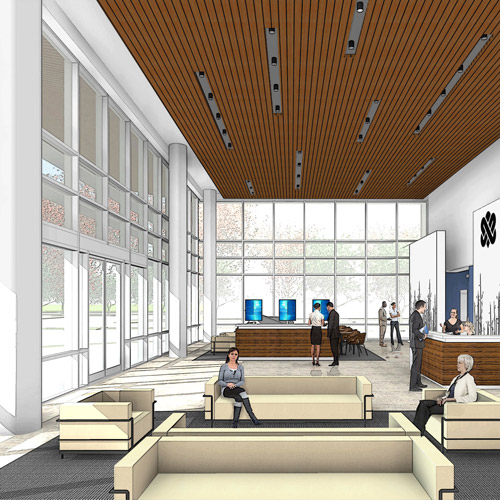The tough and durable blue jeans that date back to 1873 are more popular than ever before thanks to the innovation of the iconic Levi Strauss & Co.
Strauss, who was a Bavarian gold rush merchant, launched his dry goods company in 1853. Twenty years later, he and partner Jacob Davis received a patent for their process of riveting work pants. Together, they slowly built a business based on the sale of denim pants and, over time, that business became a bona fide empire.
Nearly 150 years later, the classic garment remains virtually the same—but almost everything else about the business has changed. With online vendors changing customer behavior, and omnichannel distribution, the retail industry is in flux. In response, the Levi’s brand has launched a new retail strategy designed to make the shopping experience effortless for the consumer.
Jesse Moyer is in charge of implementing that strategy. He joined Levi Strauss & Co. in 2015 as head of global retail store design as the company prepared to expand its retail fleet of US stores through the use of a new “Pioneer” design concept. Moyer—who spent a decade at retailers L Brands and Gap Inc.—had the scaled rollout experience Levi’s needed. He graduated from Ohio State University’s architecture school in 2006 and started working at WD Partners in Dublin, Ohio, producing construction documents for Victoria’s Secret stores.
“I found retail design intriguing because it sits at this unique intersection of architecture, interior design, graphic design, marketing, operations, and strategy,” he says.
“Consistency and scalable growth will be critical to success. We have to show up in the retail space in a strong, original, and ownable way.”
Eighteen months later, Moyer went in-house at L Brands as a store designer, where he designed nearly 100 Victoria’s Secret stores in four years. From there, he left to work on Gap’s Old Navy brand before ultimately joining Levi’s.
“One thing that propels me forward is that I know that the magic happens outside of my comfort zone,” Moyer says of accepting the challenge at Levi’s. “I am always trying to keep myself moving forward so I can try to stay ahead of the curve.”
The Pioneer design concept started as a palette of materials that reflected the work-influenced heritage of the Levi’s brand in a fresh and modern way. The company wanted to drive home its “fewer stories, better told” tagline by removing all shopping barriers from the consumer experience.

“We have a curated assortment of our icons and best products in an easy-to-navigate, bright, and optimistic environment,” Moyer says. To accomplish this, he and his colleagues used industrial aspects such as specific palettes of wood, concrete, and hot-rolled steel to match Levi’s rugged and durable brand identity. Although the first iterations of the Pioneer concept played with scale and industrial details such as pipe fittings, the need to democratize the design became clear, and the scale and details became more refined. Moyer introduced white into the palette to help make the environment more inviting, and he lowered the perimeter fixtures to make products more accessible. Lastly, a decorative visual layer with framed images, potted plants native to California, and delineated product stories with super graphics five feet wide by ten feet tall connect consumers to the brand’s legacy.
The company first unveiled the Pioneer concept in fall 2015 in its new stores in Brooklyn and Las Vegas. The successful launch represents the culmination of a massive effort to collaborate across functions like merchandising, planning, allocation, marketing, creative services, operations, brand environment, and store design.

“The point was to bring these functions together and look at how we work through a holistic lens to ramp up to a future new store rollout in the United States,” Moyer says. Throughout the process, Moyer worked to deliver the best of what he learned at Victoria’s Secret and Old Navy to create a customized rollout strategy suited to Levi’s. For example, at Victoria’s Secret, he learned all the nuances of retail spaces, from the storefront to the stockroom, and what design touches contribute to the consumer journey to make stores work. At Old Navy, he worked on flagship projects, prototype drawings, and global design standards. Now at Levi’s, he’s applying these lessons to deliver designs that will reshape the brand—reinforcing the company’s position as the denim authority while also highlighting other product strengths, such as its trucker jackets and western shirts. The store design will facilitate the expansion of Levi’s priority to become a lifestyle brand. In the changing retail landscape, he says Levi’s has a lot at stake.
“Consistency and scalable growth will be critical to success,” Moyer says. “We have to show up in the retail space in a strong, original, and ownable way.”


